Introduction
How Big Do Parakeets Get: Parakeets, popularly known as budgies, are delightful and vibrant birds that have captured the hearts of bird enthusiasts around the world. When it comes to their size, parakeets are generally considered small to medium-sized birds, making them suitable companions for those with limited space. On average, the typical parakeet measures about 7 inches (18 cm) in length from head to tail.
However, That the size of parakeets can vary based on factors such as breed, genetics, and individual health. Some parakeet breeds may be slightly larger or smaller, showcasing a diverse range of sizes within this charming bird species. In Their modest size, parakeets are renowned for their vivid plumage, with a kaleidoscope of colors that can include shades of green, yellow, blue, and more.
This visual spectacle, combined with their playful and sociable nature, has made parakeets a popular choice for both novice and experienced bird keepers. As we explore the dimensions of these feathered companions, it’s crucial to consider not only their physical size but also the immense personality and charm that parakeets care bring into homes around the globe. Whether perched on a finger or fluttering about in a spacious cage, the size of parakeets becomes just one aspect of their overall appeal.
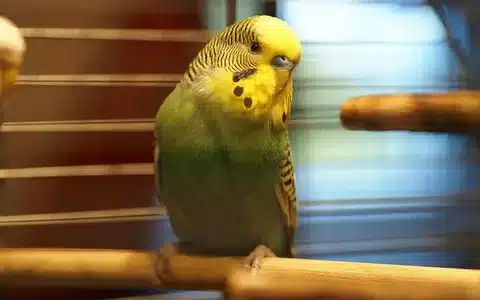
What is the maximum size of a parakeet?
The Alexandrine parakeet is one of the largest parakeets, measuring 56 to 62 cm (22 to 24 in) from the top of the head to the tip of the tail and weighing 200 to 300 g (7.1 to 10.6 oz). The tail measures 28 to 35 cm (11 to 14 in).
The size of a parakeet can vary depending on the specific species and mutation within that species. However, when people refer to “parakeets” in a general sense, they are often talking about the Budgerigar (Melopsittacus undulatus), commonly known as the budgie. The average size of a budgie is around 7 inches (18 cm) from head to tail.
In terms of the maximum size, budgies generally do not grow much larger than this average. There can be some slight variation, with individual birds being slightly smaller or larger. Other parakeet species, like the Indian Ringneck Parakeet, might be larger, with lengths ranging from 14 to 17 inches (36 to 43 cm), including the tail.
It’s essential to consider that size can also be influenced by factors such as diet, health, and genetics. Proper care, a balanced diet, and a stimulating environment contribute to the overall well-being of a parakeet, allowing it to thrive and reach its genetic potential in terms of size.
How big do budgie parakeets get?
Average Adult Size: Budgies vary in size from 5 to 11 inches. They’re not the smallest parrots – that distinction belongs to the parrotlet – but budgies are quite tiny. Average Life Span: Budgies can live for 10-15 years but have sometimes been recorded to be up to 20 years old.
Budgie parakeets, scientifically known as Melopsittacus undulatus, are one of the most popular pet bird species, and they are relatively small compared to many other parrot species. On average, adult budgies typically measure about 7 inches (18 cm) in length from the tip of the beak to the end of the tail. This measurement may vary slightly based on factors such as genetics, diet, and overall health.
While 7 inches is the average size, individual budgies can be a bit smaller or larger. Female budgies, in general, tend to be slightly smaller than males, but the size difference is often subtle. It’s worth noting that budgies are known for their vibrant and varied plumage, with colors ranging from green and yellow to blue and white, adding to their visual appeal.
When considering a pet budgie, it’s crucial to provide them with a suitable and spacious cage that allows for movement, exercise, and mental stimulation. Despite their small size, these birds are highly active and benefit from an enriched environment that includes toys, perches, and opportunities for social interaction with their human caregivers.
How fast do parakeets grow?
Also known as budgies, the birds reach full maturity at about 8 months of age. Before that time, you can approximate the age of an immature parakeet a few ways.
The growth rate of parakeets, including budgies, is relatively rapid during their early stages of life. Parakeets are altricial birds, meaning they are born in a helpless state and require significant care from their parents during the initial phases of development.
Budgies typically hatch from their eggs in about 18 to 21 days after incubation. During the first few weeks of life, the young parakeets are featherless, blind, and completely dependent on their parents for warmth, protection, and nourishment. At this stage, their growth is quite rapid as they develop feathers, their eyes open, and they start to gain mobility.
In general, budgies reach their full adult size in about 6 to 8 weeks. However, their development doesn’t stop there. While they may have achieved their adult size, their behavior, personality, and training can continue to evolve throughout their lives. During the initial stages of their lives, providing a well-balanced diet, a comfortable environment, and proper socialization is crucial for their healthy growth and development.
Are parakeets friendly?
Parakeets are loving creatures that crave the attention of their owners. Make wonderful pets for families living in small homes and apartments. Excellent choice for families with small children and other pets.
Parakeets, particularly the common Budgerigar (or budgie), are known for their friendly and sociable nature. These small parrots are often chosen as pets because of their playful personalities and the ability to form strong bonds with their human caregivers.
When properly socialized and given sufficient attention, parakeets can become quite affectionate. They may learn to mimic sounds, respond to their owners, and even enjoy physical interaction such as being petted or perching on a finger. However, it’s Individual personalities can vary among parakeets, and some may be more reserved or shy than others.
The key to fostering a friendly relationship with a parakeet is spending quality time with them, providing mental and physical stimulation through toys and activities, and offering a well-balanced diet. Starting interactions gently and allowing the bird to become accustomed to your presence at its own pace can help build trust.
While parakeets have a reputation for being friendly and social, it’s essential to That they are living beings with unique personalities. Respect for their individual preferences and a patient, positive approach to interaction will contribute to a strong and positive bond between parakeets and their human companions.
Is a parakeet a good pet?
The parakeet has become a popular pet due to its often striking colors and ease of taming. Parakeets are very social birds and prefer to be kept in pairs or small groups. The genders in a group or pair can be mixed. If you don’t want to breed your birds, it’s suggested to keep them in groups of the same gender.
Yes, parakeets, particularly Budgerigars (budgies), can make wonderful pets for the right individuals or families. There are several reasons why parakeets are often chosen as pets:
Size: Parakeets are relatively small, making them suitable for people who may not have a lot of space for larger bird species.
Personality: They are known for their playful and social nature. Many parakeets enjoy interaction with their human caregivers and can form strong bonds.
Intelligence: Parakeets are intelligent birds and can learn tricks, mimic sounds, and even some words if trained.
Colorful Plumage: They come in a variety of vibrant colors, adding visual appeal to their presence.
Low Maintenance: Compared to some other parrot species, parakeets are considered lower maintenance. They don’t require as much space, and their diet and care are relatively straightforward.
Affordability: Parakeets are generally more affordable than larger parrot species both in terms of initial cost and ongoing care.
However, it’s crucial to consider that owning any pet involves responsibilities. Parakeets need proper nutrition, a clean and safe environment, mental stimulation, and regular veterinary care. They are social animals, so they benefit from interaction and may not do well if left alone for extended periods.
Prospective parakeet owners should also be aware of the potential lifespan of these birds, which can be around 5 to 10 years or even longer with proper care. It’s Research and understand their needs to ensure a happy and healthy life for the pet and a positive experience for the owner.
How old parakeets lay eggs?
Parakeets are physically able to breed at around 6 months old, but they should not be allowed to do so before at least 10 months old. A younger bird won’t be able to be a good parent. There is no hurry — once they’ve matured, females will be able to breed for four years and males for six.
Female parakeets (budgies) generally reach sexual maturity at around 5 to 8 months of age, but this can vary among individuals. Once a female parakeet reaches sexual maturity, she may start laying eggs. However, there are several factors that influence when a parakeet will start laying eggs:
Health and Nutrition: A parakeet needs to be in good health and receive proper nutrition to reach sexual maturity and lay eggs.
Environment: The conditions of the environment can also play a role. If a female parakeet perceives her surroundings as suitable for nesting, she may be more inclined to lay eggs.
Presence of a Male: Having a male parakeet in the same environment can stimulate egg-laying behavior. Even if a female is not exposed to a male, she may still lay eggs without mating (parthenogenesis), but these eggs are infertile.
It’s worth noting that egg-laying in parakeets can pose health risks, especially if the female lays eggs frequently. Complications such as egg-binding (difficulty passing an egg) and nutritional deficiencies can occur. To prevent such issues, it’s essential to provide a balanced diet, limit nesting stimuli (such as dark, enclosed spaces), and monitor the female’s health.
Can parakeets eat fruit?
Fruits and vegetables are part of the standard diet for pet parakeets. They enjoy the different textures and tastes, and fresh foods are part of the bird’s sensory world. Unlike human children, it’s perfectly okay for parakeets to play with their food! Always offer fruit and veg raw.
Yes, parakeets can eat a variety of fruits as part of a balanced and healthy diet. Fruits provide essential vitamins, minerals, and antioxidants that contribute to a parakeet’s overall well-being. Here are some fruits that are generally safe for parakeets:
Apples: Remove seeds and core, and cut into small, bite-sized pieces.
Bananas: Provide in moderation due to their high sugar content.
Berries: Blueberries, strawberries, raspberries, and blackberries are all good choices.
Grapes: Sliced or cut into small pieces to prevent choking.
Melons: Watermelon, cantaloupe, and honeydew are safe options.
Papaya: Remove seeds and skin, and offer in small pieces.
Pineapple: Remove the tough outer skin and core, and offer the juicy flesh.
Mango: Remove the pit and peel, and provide in small, manageable pieces.
To wash fruits thoroughly to remove any pesticides or contaminants. Always introduce new foods gradually to monitor your parakeet’s reaction. While many fruits are safe, some should be avoided, including avocados, which are toxic to birds.
To offer a diverse diet that includes a mix of fruits, vegetables, seeds, and a high-quality pellet food designed for parakeets. Variety is key to ensuring that your parakeet receives a range of nutrients for optimal health. Providing fresh water is also essential for keeping your parakeet hydrated.
How intelligent are parakeets?
The “parakeets” are known for their intelligence and are even able to mimic human speech, but that intelligence might serve an even more Function: reproduction and pair bonds, according to a new study by a researcher at the University of Colorado Boulder.
Parakeets, particularly Budgerigars (budgies), are considered to be highly intelligent birds among the avian species. Their intelligence is demonstrated in various ways:
Problem Solving: Parakeets are known for their problem-solving abilities. They can figure out how to manipulate objects and solve simple puzzles.
Learning and Mimicry: Budgies are excellent learners and have the ability to mimic sounds, words, and even tunes. While their vocabulary may not be as extensive as some larger parrot species, they can learn and repeat words and phrases with proper training.
Social Interaction: Parakeets are highly social birds, both in the wild and as pets. They form strong bonds with their human caregivers and other birds, showcasing an understanding of social dynamics.
Memory: Parakeets have good memory retention. They can and recognize people, routines, and specific environmental cues.
Playfulness: Parakeets engage in various forms of play, which not only provides entertainment but also demonstrates cognitive abilities. They enjoy exploring toys, solving puzzles, and interacting with their environment.
Communication: While their vocalizations may not be as complex as those of larger parrot species, parakeets use a variety of sounds to communicate with each other and with their human companions.

Conclusion
The size of parakeets adds an intriguing dimension to the allure of these captivating birds. While they may be considered small to medium-sized in the avian world, their impact on the hearts of bird enthusiasts is anything but diminutive. The average length of around 7 inches provides a manageable and charming presence, making parakeets an ideal choice for those seeking feathered companionship without the space constraints that come with larger bird species. Beyond the metrics of size, the vibrant plumage and engaging personalities of parakeets enrich the experience of bird ownership, creating a dynamic and rewarding relationship between these avian friends and their human counterparts.
Understanding the factors that contribute to the variability in parakeet size, such as breed and genetics, adds depth to the appreciation of these birds. Whether one is drawn to the petite elegance of certain breeds or the slightly larger stature of others, the diversity within the parakeet world ensures that there is a perfect match for every bird enthusiast. In essence, the size of parakeets becomes just one facet of their multifaceted charm, with their colorful presence and playful antics making a lasting impression on those fortunate enough to share their lives with these delightful creatures. As we marvel at the spectrum of sizes within the parakeet live kingdom, it’s clear that their impact extends far beyond the physical dimensions, leaving an indelible mark on the hearts of those who welcome them into their homes.

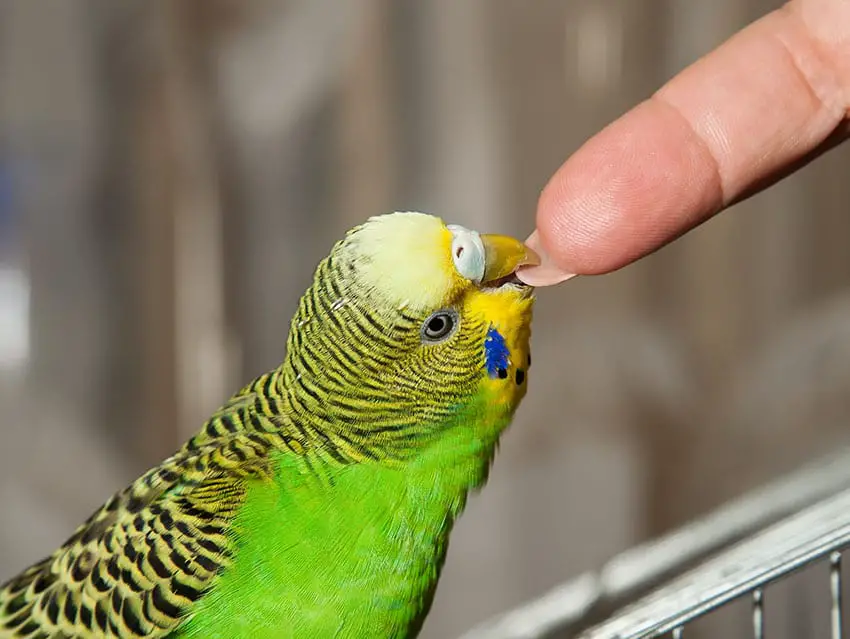
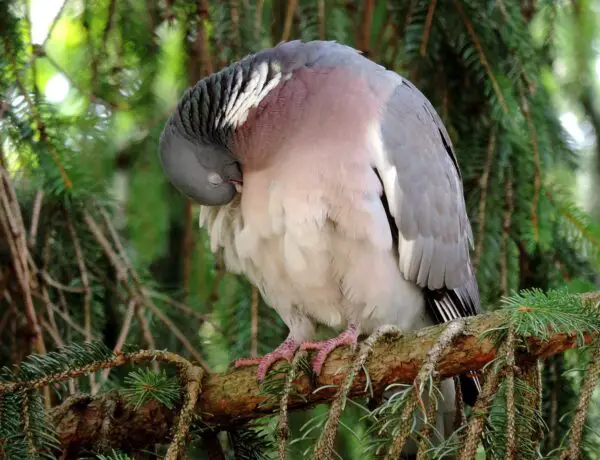
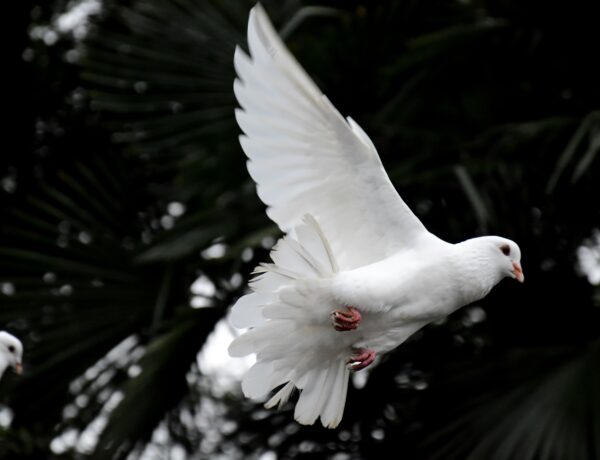
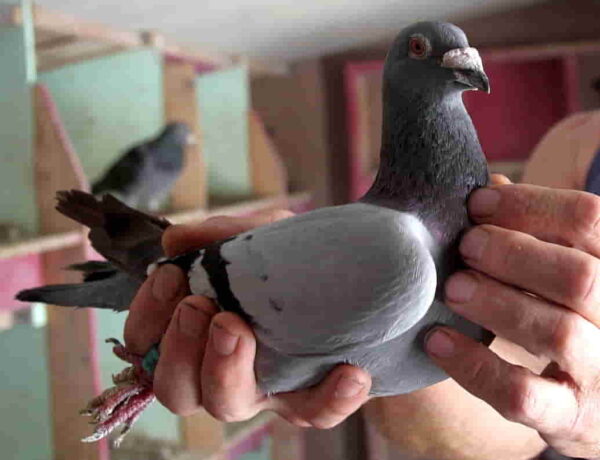
No Comments